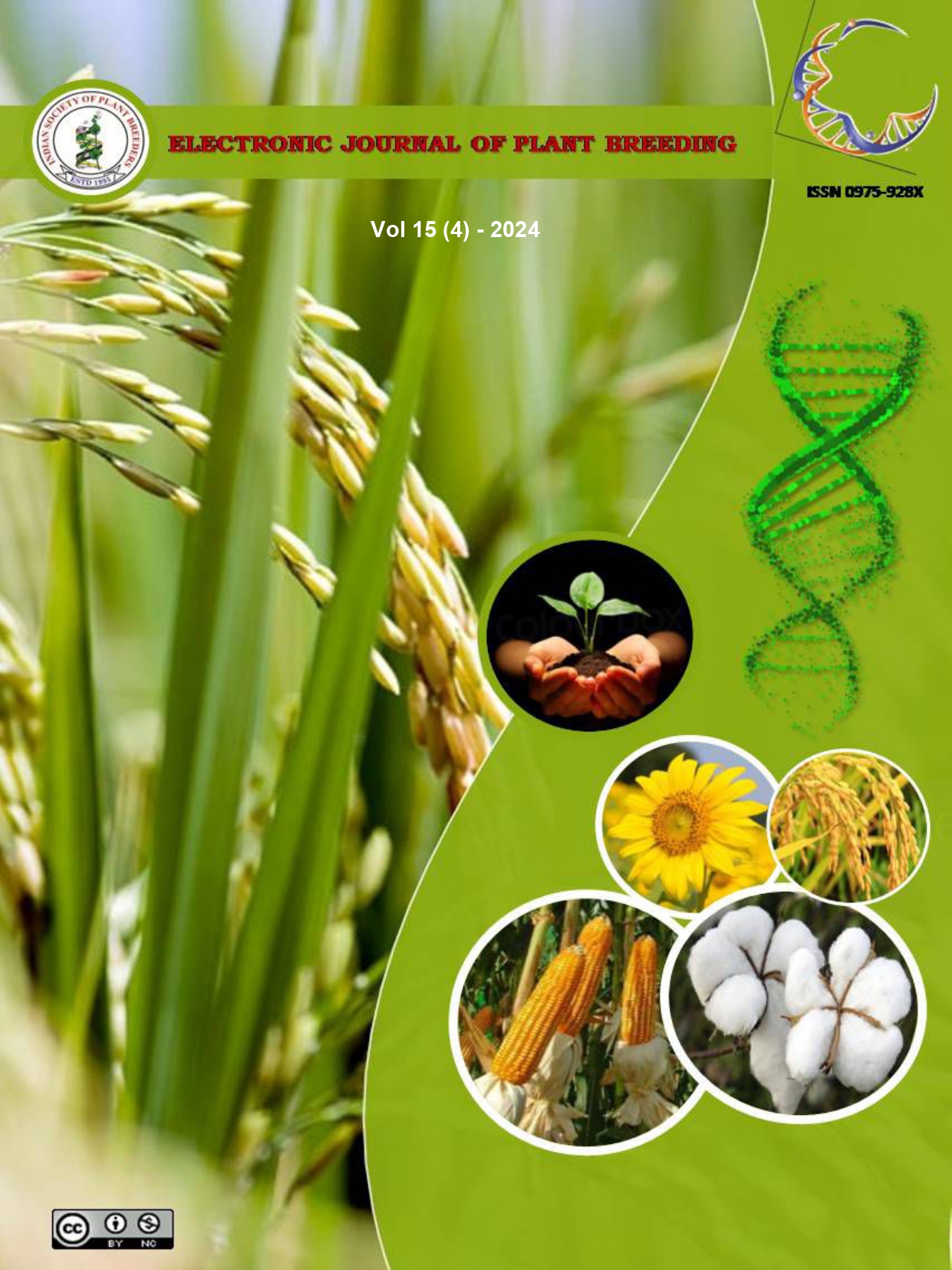Analysis of variability, heritability and trait association in four F2 populations of Gossypium hirsutum L.
DOI: 10.37992/2024.1504.114
Abstract
Cotton is a prime crop of industrial importance. The assessment of variability provides scope for planning the breeding programmes. This study was conducted at Tamil Nadu Agricultural University, Coimbatore in F2 generation for the crosses viz., CO 17 x KC 2, TVH 002 x KC 3, TVH002 x RAHC 1039 and TCH 1894 x NDLH 32 to estimate the variability, trait heritability and correlation among traits. In this experiment, high PCV paired with high GCV was noted for number of monopodia per plant as well as boll weight in all the four crosses. High heritability along with high genetic advance as per cent of mean were noted among all the crosses for seed index, boll weight, plant height and lint index. The plant yield of a single plant in all the crosses was noted to be significant and positively correlated with lint index, number of bolls per plant, internode length, boll weight and plant height.
Keywords: Correlation, F2 population, Heritability, Variance
Analysis of variability, heritability and trait association in four F2 populations of Gossypium hirsutum L.
. 2025. Electronic Journal of Plant Breeding, 15 4, 903-911. Retrieved from https://ejplantbreeding.org/index.php/EJPB/article/view/5109It is certified that:
- The corresponding author is fully responsible for any disputes arising due to the publication of his/her manuscript.
- The article has been seen by all the authors who are satisfied with its form and content.
- The sequence of names of authors in the by-line is as per their relative contribution to this experiment, giving due credit to all scientists who made notable contribution to it.
- All the authors fully understand that inclusion of any other co-authors or exclusion of any co-authors is not possible once the article has been submitted to the journal.
- The corresponding author takes full responsibility for this article.
- The address of the organization where the research was conducted is given.
- The article is exclusive for this journal, and the results reported here have not been sent (and will not be sent during its consideration by this journal) for publication in any other journal.
- Authors agree to abide by the objective comments of referees and do agree to modify the article into a short note as per the recommendation, for publication in the Electronic Journal of Plant Breeding.
- If published in Electronic Journal of Plant Breeding, the copyright of this article would vest with the Indian Society of Plant Breeders, who will have the right to enter into any agreement with any organization in India or abroad engaged in reprography, photocopying, storage and dissemination of information contained in it, and neither we nor our legal heirs will have any claims on royalty.



